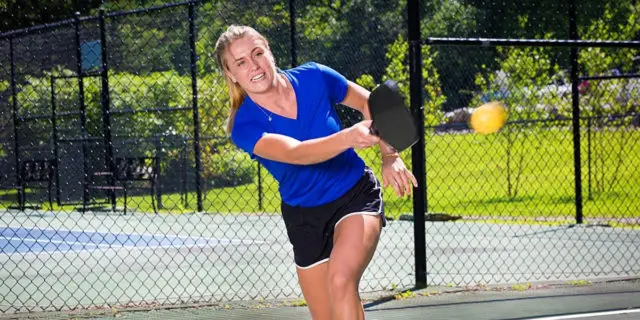As one of the fastest growing sports today, pickleball’s popularity keeps increasing, and the rules of the game are becoming more defined. Like in other sports, there is a penalization for illegal pickleball serves, and you’ll need to be aware of what constitutes as a legal serve if you plan to play competitively.
To avoid making a blunder on the court, players can become aware of illegal pickleball serves by reading international pickleball rules, watching live matches and tutorials, and learning from professional players. If you really want to study your serving technique, you can also record yourself serving the ball, and watch it back for mistakes. While having the best pickleball paddles will certainly help with your serve, it’ll only take you so far. To help, we’ve put together a list of some important things to know when serving in pickleball.

First, it is essential to understand the criteria for legal pickleball serves. According to the International Federation of Pickleball Official Rulebook, there are three major criteria to be met for a serve to be termed legal:
- The server’s hand must move in an upward motion (whether the serve is made with a backhand or forehand motion).
- The server must not make contact with the ball above the waist.
- When the paddle strikes the ball, the highest point of the paddle head must not be above the wrist.
Further, there are a handful of factors that make for an illegal pickleball serve:
- Overhand Stroke: Pickleball serves should not be confused with tennis serves. An overhand stroke is an illegal pickleball serve. Legal serves in pickleball are made with an underhand stroke.
- Above Waist Level: Making a serve above waist level is considered illegal in pickleball. Legal pickleball serves are made below naval (waist) level.
- Above the Wrist: When serving, the paddle head shouldn’t be above the wrist.
- Standing in Front of the Baseline: While serving, both feet must be behind the baseline, serving while standing in front of the baseline is a fault.
- Disobeying the 10-Second Rule: No hesitation is allowed during a serve. As soon as the recount of the score has been called, the player has only ten seconds to serve. Serving after ten seconds is considered illegal. If the serve is delayed for too long, the referee can award the opposing team a point.
- Touching the Net: If the player, the player’s paddle, or the player’s clothing touches the net while the ball is in play, it is a fault.
- Ball Landing on the Kitchen Line: If your serve hits the kitchen line or lands in the kitchen, it is an illegal pickleball serve.
How to Avoid Illegal Pickleball Serves
It may not be possible to avoid making errors in pickleball completely – this is even more so for beginners – but becoming more aware of the pickleball serving rules will reduce the chances of making illegal pickleball serves.
Increasing Your Agility and Control
To become a better pickleball player, it’s advisable to spend more time exercising off-court. Pickleball is an exercise in itself, but improving your agility requires doing more than playing the game. Improving your agility and control will help you avoid illegal pickleball serves.
Drills
Like in every other sport, practice is necessary to improve your skills. There are several drills you can find online to help you learn to serve and the various pickleball serving rules.
Observation
Apart from recording and watching yourself, watching other players – their techniques, motion, and faults – will help you avoid illegal pickleball serves and improve your chances of becoming a better player.
Research
You can learn about the legal pickleball serving rules by brushing up on your knowledge. Raising your awareness about serving rules can improve your playing. Improving your knowledge about pickleball serving rules and illegal pickleball serves will not only help you abide by the rules but will also help you become a better pickleball player in the long run.
Final Thoughts
It is very clear that anyone that wants to play pickleball competitively should become familiar with legal and illegal pickleball serves, and try to avoid the illegal ones as much as possible. To become a professional player, one must be aware of the international strategies and rules set by the Federation of pickleball and stick to them.

